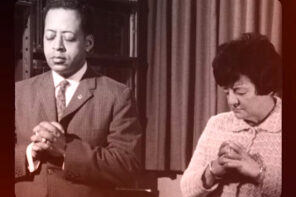In July 2011, Chantal Lavigne of Quebec died as a result of a personal development seminar. Last week, a coroner’s report confirmed that Lavigne was accidentally “cooked to death” during a class called “Dying in Consciousness.” Participants were wrapped in mud and plastic, covered with blankets, and left immobilized for about nine hours. Cardboard boxes were placed over their heads and they were encouraged to hyperventilate. Lavigne died of hyperthermia when her body was unable to dissipate heat properly.
The seminar was held at a spa called Ferme Reine de la Paix and organized by Gabrielle “Séréna” Fréchette. In her work as holistic healer, Fréchette channels “Melchizedek,” a mysterious king and priest that appears in the book of Genesis. Lavigne had already completed 85 personal development seminars at the spa, for which she paid more than $18,900.
This seminar may have been related to the conscious dying movement, which explores ceremonies from world traditions such as shamanism and Tibetan Buddhism that emphasize both preparing for death and gaining spiritual insight through near-death experiences. In audio recordings of the session, Fréchette allegedly states, “The time has come for this body of death that you believe is yours… Death is freedom… death is the truth.”
This is not the first time tragedy has resulted from holistic therapies that involve heat and confined spaces. In 2000, ten-year-old Candace Newmaker was accidentally smothered to death during “rebirthing therapy” that involved wrapping her in blankets and sitting on her to simulate the experience of birth. The therapists received prison sentences of 16 years. In 2009, two people died in a poorly constructed homemade sweat lodge during a five-day “Spiritual Warrior” retreat organized by James Arthur Ray, a self-help expert who appeared on Oprah and in the film The Secret.
The Canadian Broadcasting Corporation consulted Dianne Casoni, a criminologist from the University of Montreal who studies “cultic groups,” including self-help groups. Casoni expressed concern both about the influence holistic health providers gain over their clients and the lack of oversight over such seminars. Holistic healers have, in fact, been framed as sinister and manipulative charlatans at least since the nineteenth century.
Suspicion of traditions such as New Thought, water cure, and mesmerism foreshadowed later panics over cults. One blog has already labeled Fréchette, “a deranged New Ager.” A Quebecois commenter called her “un garou de sect” (a cult guru). However, it should be noted that Frechette has been offering similar courses for 20 years and claims that this is the first such incident out of some 2,000 participants. Fréchette also called 911 as soon as she realized one of her students had lost consciousness. It remains to be seen whether charges will be filed against her.
Instead of inciting fear of “therapy cults,” this tragedy should be used to reflect on our notions of “religion” and “medicine.” “Wellness,” as conceived by holistic health practitioners, involves the mind, the spirit, and the body. However, North Americans frequently continue to think about “religion” in Cartesian terms as a phenomenon of the mind and spirit rather than the body. This view assumes that medicine should be closely regulated, but that religion should be a thoroughly private matter. These imperfect categories make it difficult to decide when therapists should be licensed to perform potentially dangerous spiritual services.




